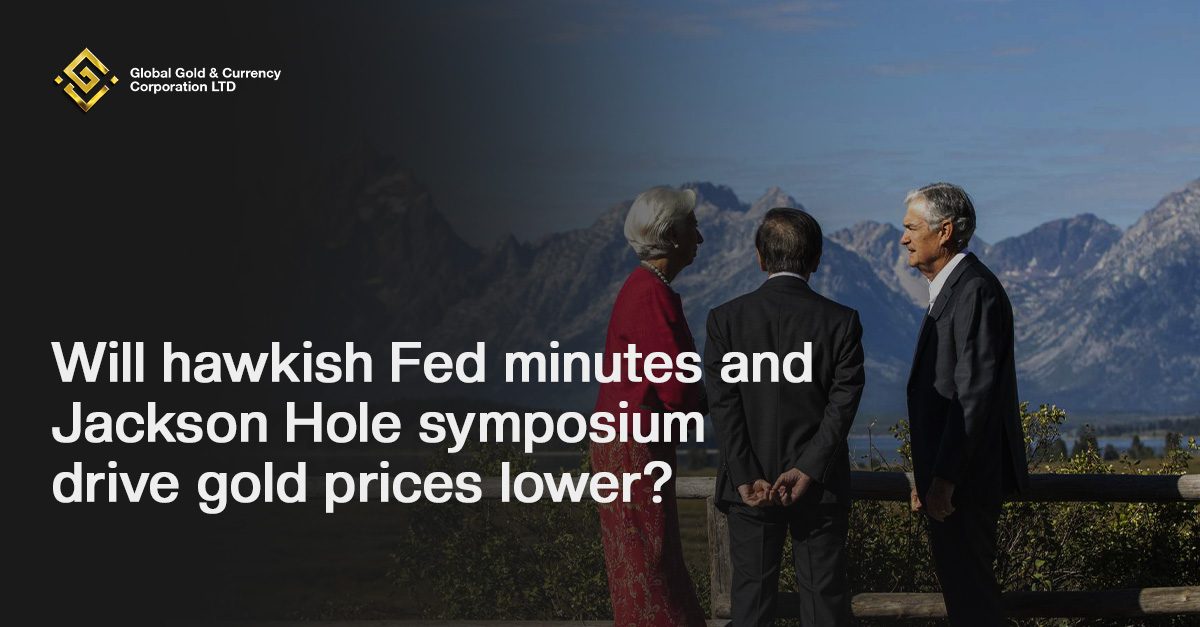
Will Hawkish Fed Minutes and Jackson Hole Drive Gold Prices Lower?
Gold prices have come under pressure as markets digest the Federal Reserve’s recent meeting minutes, which signaled a persistent hawkish stance. The minutes indicated that most Federal Open Market Committee (FOMC) members prefer keeping interest rates elevated to tackle lingering inflationary pressures. This approach emphasizes price stability over short-term economic growth, highlighting the Fed’s commitment to preventing the economy from overheating.
Higher interest rates have a direct impact on gold because they increase the opportunity cost of holding non-yielding assets. When investors can earn higher returns on interest-bearing instruments like U.S. Treasuries, gold becomes less attractive. Additionally, elevated rates typically strengthen the U.S. dollar. Since gold is priced in dollars, a stronger currency makes it more expensive for international buyers, reducing global demand and applying further downward pressure on prices.
The Jackson Hole Economic Symposium, scheduled for August 21–23, 2025, is a focal point for investors. This annual event brings together central bankers, policymakers, and economists to discuss global economic trends and monetary policy. Investors are particularly attentive to Fed Chair Jerome Powell’s remarks, seeking clues about the Fed’s policy trajectory. Even subtle hints regarding rate adjustments, quantitative tightening, or future easing measures could trigger volatility in gold and other commodity markets.
Market analysts remain divided on gold’s near-term outlook. Some expect the Fed to maintain its high-rate stance due to persistent inflation and robust economic indicators. Others suggest that signs of slowing growth, softer employment data, or a decline in core inflation could prompt a shift toward easing, potentially boosting gold prices. Treasury yields, real interest rates, and inflation expectations will continue to be key technical drivers that investors monitor closely.
In summary, the combination of hawkish Fed minutes and the Jackson Hole Symposium is creating a complex environment for gold investors. The interplay of interest rates, U.S. dollar strength, and Fed guidance is crucial for understanding gold price movements. Investors who can interpret these macroeconomic signals and integrate them with technical analysis will be better positioned to make informed decisions in the precious metals market.
- Federal Reserve – July 2025 Minutes
- Investopedia – How Interest Rates Affect Gold
- Bloomberg – Jackson Hole Preview 2025
- Kitco – Gold Market Analysis







